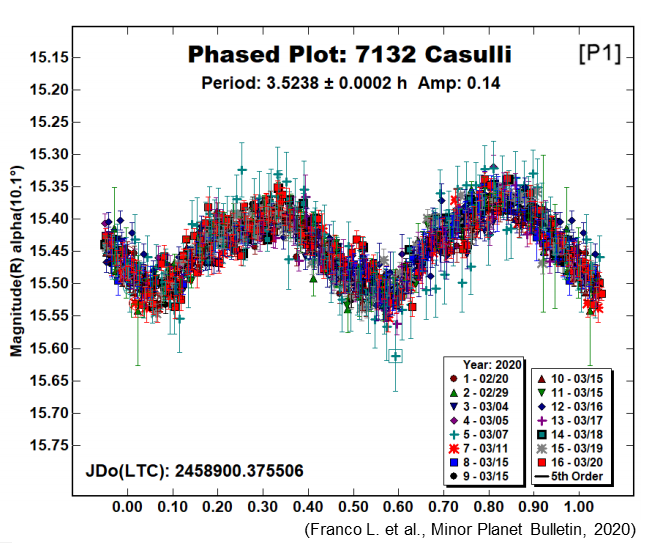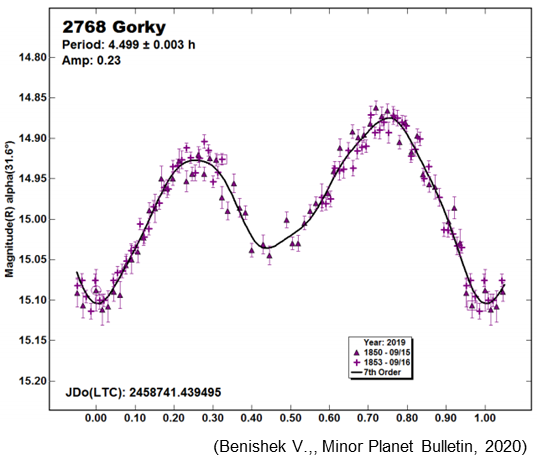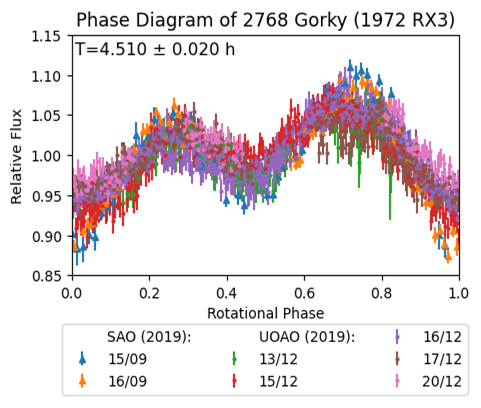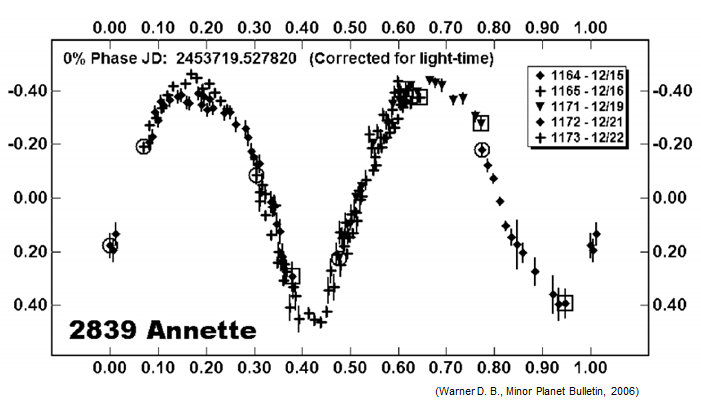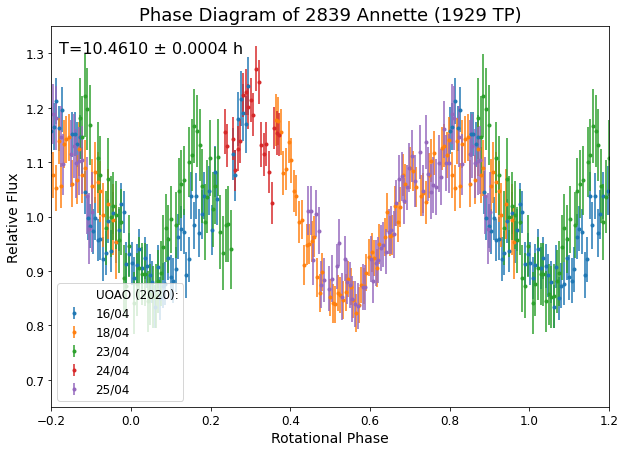Observing Guidelines
In order to perform valuable and useful data for our project, please follow the observing quidelines strictly.
- Run the online Web Application and identify the asteroids that you can observe from our target list, based on your location, the observation period and a couple of requirements/preferences. (It takes a while for the application to open due to the server limitations, so be patient). Instructions for using the Web Application can be found here.
- Choose a target from the extracted shortlist and create your observation plan, using the online Web Application.
- Prepare your equipment well in advance before the observing night and always take dark, bias and flat calibration frames before and after your observation.
- At least 10 dark frames should be taken with stable CCD/CMOS temperature. The exposure time should be the same with that of the light frames and all frames should be taken at the same temperature with the light exposures.
- At least 10 bias frames should be taken with stable CCD/CMOS temperature. There is no exposure time for bias frame but make sure that all frames should be taken at the very same temperature with the light exposures.
- At least 10 flat frames should be taken under a uniform illumination. Exposure time should be very small (depending on your uniform illumination). Make sure that nothing has been changed in your optical setup between flat and light frames. Camera orientation, telescope focus and temperature should remain the same during the entire observing run.
- The observation run is prefered to be performed unfiltered (clear aperture). It is significant to observe the target in the same field during the night. In this way, it is easier to apply differential photometry with a single standard star from the field. Make sure that you include bright but not saturated stars in the surrounding field. In order to identify the target in the starfield, you can use the AstFinder tool. Try not do observe the asteroids among dense stellar fields, in order to distiguish the target and perform uninterrupted photometry.
- Each observation run is required to be at least 4 hours in duration each night. This also depends on the rotation period and the observability of the asteroid from your location. The longer the light curves, the better results we get.
- After the data acquisition, follow the instructions and SUBMIT your observations through our server.
Sample Light Curves
A sample of light curves are listed below, so as to give an idea of the results we expect to extract out of our observational campaign.
The phase diagram of 7132 Casulli during the 2020 apparition.
The phase diagram of 2768 Gorky (1972 RX3) from Sopot Astronomical Observatory in Serbia during the 2019 apparition.
The phase diagram of 2768 Gorky (1972 RX3) from UOAO in Greece during the 2019 apparition.
The phase diagram of 2839 Annette (1929 TP) from Altimira Observatory in California/USA during the 2007 apparition.
The phase diagram of 2839 Annette (1929 TP) from UOAO in Greece during the 2020 apparition.
Additional Information
All targets for the project are displayed in the List of Primordial Family members. In order you to find which of these asteroids are observable during your observation period from your location, we are highly recommend to use the online Web Application The application will also provide the observation plan for your selected target. The ephemerides of asteroids can be also calculated through MPC Ephemeris Service or JPL’s HORIZON system.
Further Reading
- http://www.minorplanet.info/ObsGuides/Misc/photometryguide.htm Minor Planet Website
- "A Practial Guide to Lightcurve Photometry and Analysis", Warner B.D., 2006, Springer
- "The Backyard Astronomer's Guide". Dickinson T. and Alan D., Firefly Books, 2008
- "Confessions of a Beginner Asteroid Light Curve Photometrist", Menke J., Society for Astronomical Sciences Annual Symposium, Vol. 22, 2003 (ADS link)
